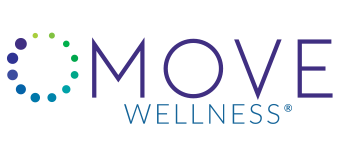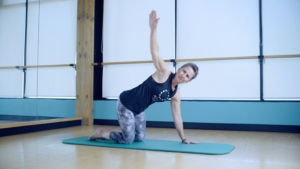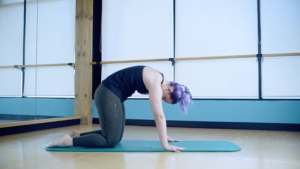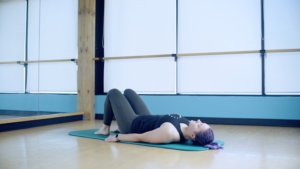Pilates for Back Pain – 6 Ways to Get Rid of Back Pain
Back pain, especially low back pain, is one of the most common complaints we hear when people come to MOVE for Pilates. Studies suggest that 75-85% of the population has experienced low back pain. It is a frustrating condition because moving around sometimes seems to cause more pain and our instincts can be to stop moving. Unfortunately, lack of movement is often at least partly to blame and can also make symptoms worsen over time. Factors that come with aging such as stiffness and the hormonal changes that come with menopause can also play a role. Luckily, depending on the cause of the pain, there are certain Pilates movements for back pain that can help relieve chronic pain and in many cases make it much less of an issue.
What Causes Back Pain?
There are many causes of back pain. Often, it is a combination of your physical structure, which is sometimes thought of as posture, but really extends to the alignment of the entire skeleton, and your lifestyle. Sometimes, back pain is related to a trauma such as a fall or car accident. Because these factors are unique to each person, the goal is to understand the underlying causes and create a program to address them.
What are the factors causing back pain?
When looking for the cause of back pain, start by thinking about two things. First, think about lifestyle. What do you do all day? If your job requires long hours on your feet or sitting at a desk or in a car, this may be a contributing factor. Our body functions best when we move a lot. Sitting or standing still can bring compressive forces into the spine. Furthermore, stillness does not allow for optimal circulatory function. This compounds daily because our body starts to adapt to sitting all day and our anatomy actually changes in ways that might lead to back pain.
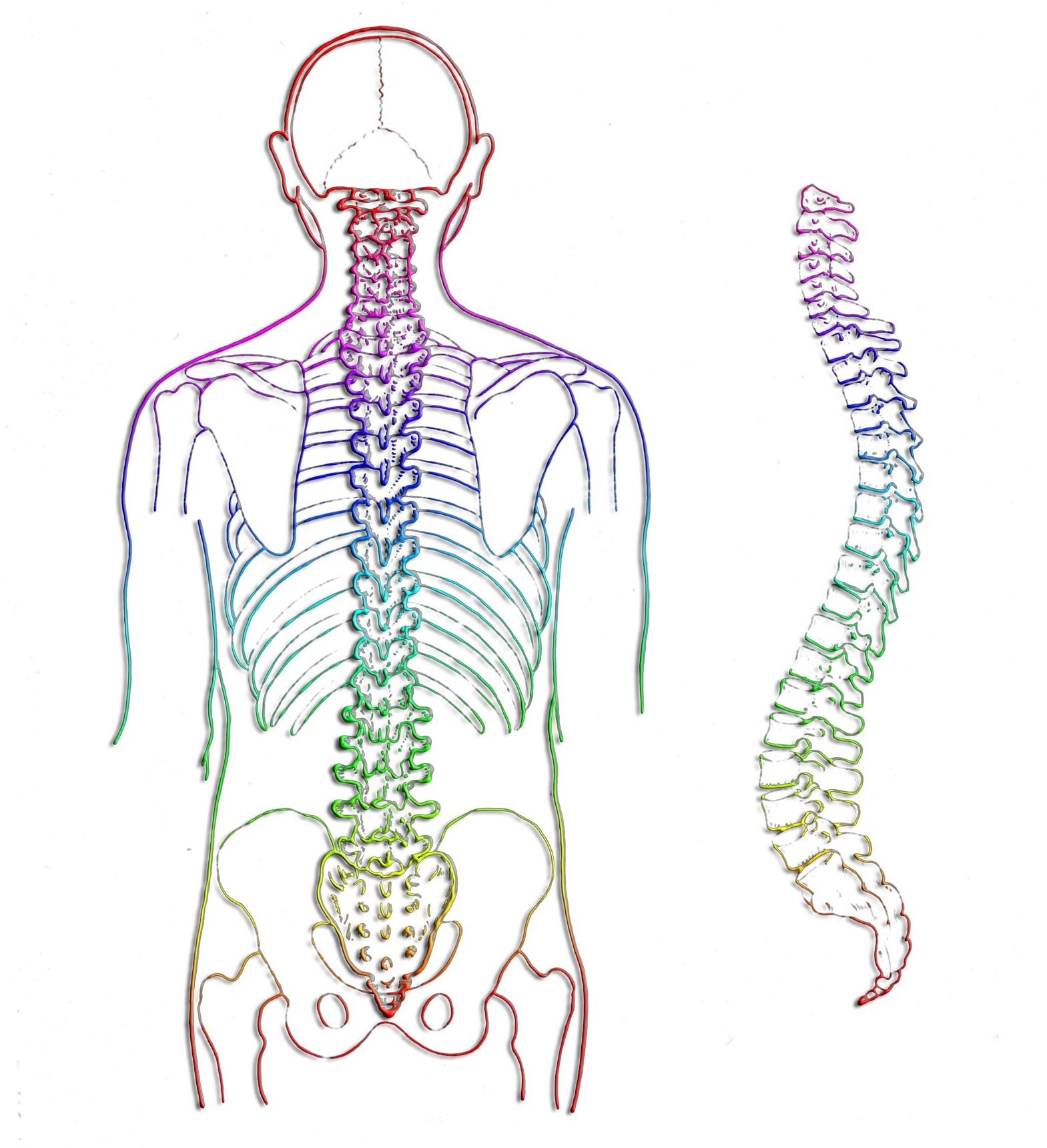
For example, if we sit for long periods of time, our muscles begin to adapt to that position. Then, when we want to move around, it can cause pain and strain on muscles and joints. If you sit a lot but like to walk or work out, think about those activities. What is the muscular emphasis of that activity? If you are a runner, for example, and you sit at a desk for work, your quads and hip flexors can become tight and place some pressure and a type of “pulling” force onto your low back, increasing the curve of your spine and causing pain.
The second area to think about is your own structure and posture. Many people say “I have bad posture” when we meet them. The goal is not to have perfect posture but to have a balanced, mobile and strong spine. As we introduce gentle movement into the body, curves of the spine become less extreme and optimal function can be restored. Very often, by bringing balanced movement into the spine you can mitigate pain and its underlying causes.
Is Pilates Good for Back Pain?
Pilates is not only beneficial for neck issues but stands out as a powerful remedy for back pain as well and scientific studies are supporting this claim with concrete and growing evidence. The practice emphasizes core strength, flexibility, and awareness of proper posture, which are particularly therapeutic for those plagued by back discomfort. By reinforcing the body’s core — the abdominal, lower back, and pelvic muscles — Pilates for lower back pain provides a support system that can alleviate pressure on the back. Additionally, the stretching and lengthening movements improve spinal alignment and increase flexibility, which helps reduce existing back pain and prevents future incidents. It is a safe and low-impact exercise option that individuals of all fitness levels can use to create a stronger, more resilient back.
How to Get Rid of Back Pain
Healing back pain requires consistent focus and attention. It also requires dedicating the time needed to make lifestyle changes. There are no quick fixes for back pain. A mindful and consistent approach is best. You might need to experiment to find what works best for your body. Then, once you understand what helps ease the pain, you can tailor the suggestions below to work for your individual needs. MOVE trainers can help you with the movement and breath-work suggestions.
1. Visit Your Physician
First, see your physician first to rule out any other issue or pathology. You can also talk to them about pain relievers, and if they would be beneficial in helping your back pain. Be sure to receive clearance from your doctor before you introduce a new exercise practice.
2. Visit a Specialist
Your physician might refer you to a physical medicine and rehab physician (also called a physiatrist or PM&R specialist) or suggest physical therapy. MOVE has partnered with in-house physical therapist, Melissa Trauger. Melissa is available to see clients on-site at MOVE and will help liaise a continuum of care with our in-studio trainers. Whatever type of specialist you work with, make sure they can help you communicate with your Pilates or Gyrotonic trainer to help articulate training goals and any contraindications.
3. Mindful Breathing
It sounds simple but learning to breathe well can help back pain. Have your trainer teach you diaphragmatic breathing and how to use it to help organize the musculature of your trunk. An added benefit, this mindful breathing practice can also help calm the nervous system.
4. Move More
Bring more movement into your day and sit less. Sitting brings compressive forces into the spine and places stress on your hips and legs. By taking movement breaks throughout the day, you can stimulate the normal muscular organization of your spine, pelvis and legs and mitigate the stress caused by sitting. Set a timer on your phone or smartwatch that tells you to get up a move every 30 minutes. Once the timer goes off, take one minute to walk a quick lap around your office or desk area.
5. Back Exercises
It is important to strengthen the whole body to build a strong healthy back. Doing the exercises listed below under the watchful eye of a trainer and then practicing these and other exercises tailored to your unique needs daily will build the lasting strength needed for a healthy back.
6. Heating Pads and Warm Baths
Heating pads and warm baths can help relax the back muscles and reduce pain. Heat increases blood flow throughout the body which aids in relaxing stiff muscle fibers. There is more support to use heat, as opposed to ice, for back pain, because muscle tightness tends at the root of pain and heat functions better at loosening muscles.
Pilates for Back Pain
The best Pilates stretches for back pain are gentle movements. Daily movement “vitamins” will support your body’s needs to bring more movement and strength into your day. We’ve recorded the perfect class for you on our Youtube Channel and you can find it at the end of this post. Remember, slow and steady wins the race here, so pay attention to your body, including what works and what doesn’t. Here are some stretches that can help alleviate back pain:
Exercise 1: Cat Stretch
STARTING POSITION
Begin kneeling on all fours. Arms underneath shoulders, and knees directly underneath hips, slightly apart. Spine is reaching long from tail to head.
EXERCISE
Inhale to grow longer and find length through the spine.
Exhale to use abdominals to round the spine into a c-curve starting from the tailbone. The head is last to round.
Inhale to breathe into the sides of the rib cage, rounding deeper.
Exhale starting from the tail end of the spine, extend spine one vertebrae at a time back into starting position.
Notes: Maintain oblique activation to keep rib cage closed and lumbar spine from extending.
Exercise 2: Spinal Rotation
STARTING POSITION
Begin sitting in a chair or lying on your side, knees bent and pulled up towards hips. Arms are straight in front of you with palms together. A pillow can be used for head support.
EXERCISE
Inhale to lift the top arm up towards the ceiling, following the arm with your gaze, keeping a long reach through the fingertips.
Exhale to continue to reach your arm back behind you as your torso rotates and your chest opens up toward the ceiling, still maintaining gaze on the arm.
Reach fingertips longer towards the upper corner as you take a deep inhale. Exhale to relax into position and to open the chest a little more. Repeat inhale. Exhale and, using abdominals, rotate back to the starting position.
Repeat on the other side.
Notes: Isolate rotation of torso. Legs stay in the same stacked position for the entire exercise.
Exercise 3: Hip Rolls
STARTING POSITION
Begin lying on your back, knees bent and feet hip distance apart. Arms are long by your sides.
EXERCISE
Inhale to breathe into the sides of the rib cage and grow long through the spine.
Exhale to recruit abdominals into an imprinted position of the pelvis and articulate spine from tail to roll up into a bridge position where wide shoulders support the weight. Hip joints are extended, knees are energetically reaching long over toes.
Inhale to stay and maintain a neutral spine.
Exhale and roll down to return to the starting position. Think of reaching the sit bones toward the heels as you articulate down through the spine.
Notes: Maintain oblique activation to keep rib cage closed and lumbar spine from extending when hips are lifted.
Pilates for Back Pain – You Can Start Now!
We know the more you move the better you feel. A great first step, is coming into the studio for a private session. MOVE Wellness has experienced trainers who can help you workout safely and effectively and provide accommodation for any injuries or nagging pains.
Book your Introductory Private Session and talk to a trainer about your what’s going on in your unique body and together MOVE’s team will help create a customized movement plan for you.
Want to hop into something right away? We’ve picked out the perfect video for you to start with. Check it out below!
